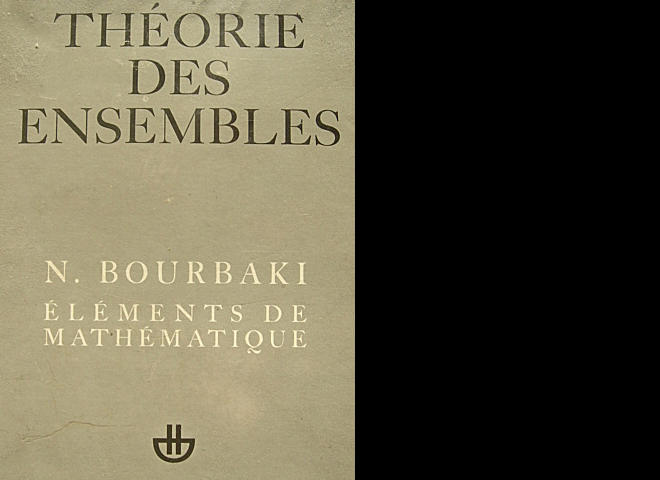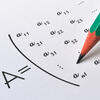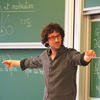You are here
Bourbaki and the Foundations of Modern Mathematics
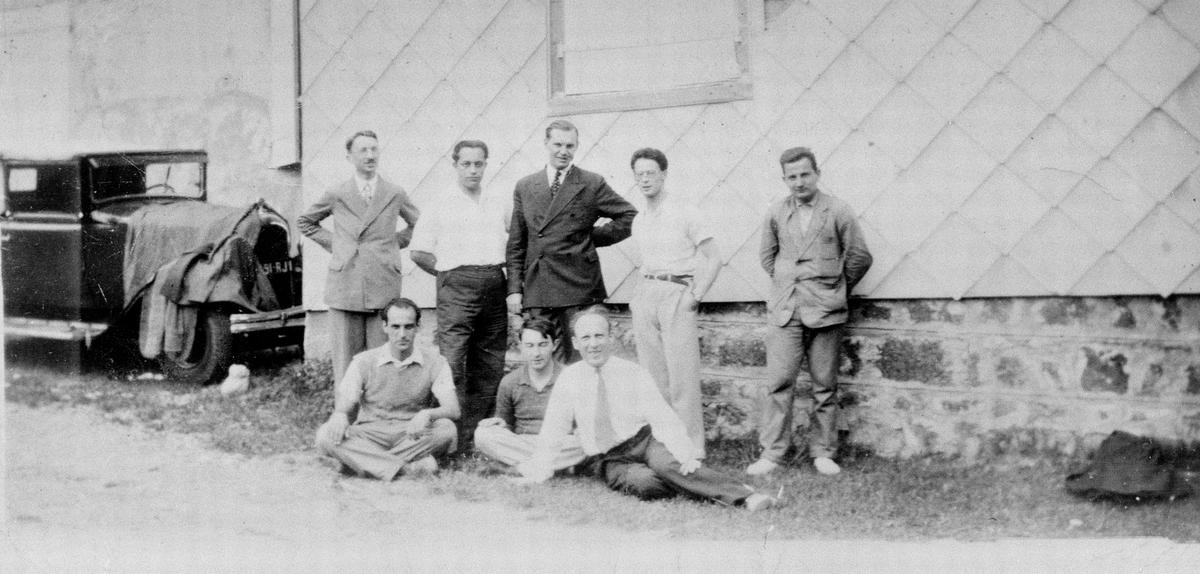
Eighty years of continuous scientific activity: for any other researcher, such longevity would be extraordinary. Not for Nicolas Bourbaki, one of the main figures of 20th-century mathematics. Although still somewhat confidential, his eternal youth is no enigma: the name is the shared pseudonym of a society of mathematicians, whose members—renewed over time—endeavor to publish a structured presentation of the discipline in the form of a monumental treatise.
Updating the axioms
The collective started out with modest ambitions. In July 1935, nine mathematicians met in the town of Besse-en-Chandesse, near Clermont-Ferrand in central France, and assumed the name Bourbaki. All aged about 30 and graduates of the École Normale Supérieure (ENS) in Paris—with the exception of Szolem Mandelbrojt—these young professors in provincial universities knew each other from their days in the Latin Quarter. It was in a café on the Boulevard Saint Michel that they set out to update mathematical analysis manuals, which they felt were no longer adapted.
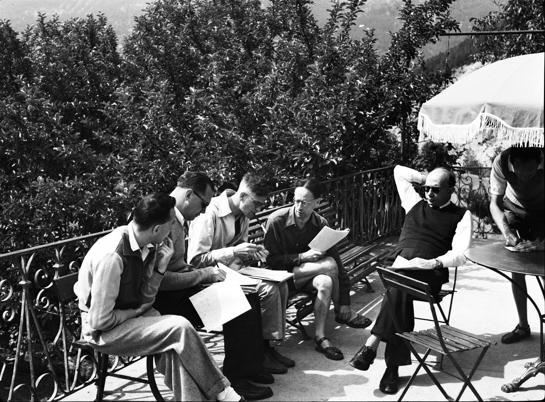
The group, which included André Weil and Henri Cartan, as well as Claude Chevalley, Jean Delsarte and Jean Dieudonné, decided to adopt an axiomatic presentation for their treatise, clearly formulating the basic rules (axioms) and deducing the related theorems by logical reasoning, expressed in simple terminology. Their goal was to give a “backbone” to mathematics, with a hierarchy of abstract structures. “In order to provide a strict definition of the fundamentals of analysis, you have to start with a little algebra, topology, function theory, etc.,” explains Antoine Chambert-Loir, a mathematician at the Université Paris Sud. The project was gradually developed and published under the title Éléments de Mathématique. The use of the term “elements” was a conscious reference to the work and axiomatic approach of the ancient mathematician Euclid, while the choice of “mathematic” in the singular (although the English title became Elements of Mathematics) reflected Bourbaki’s perception of the discipline’s deeply-rooted unity. The first volume, released in 1939, was devoted to set theory.
Schoolboy humor and intellectual precision
Éléments de Mathématique achieved rapid success, both within and outside of France, and became a fixture in all specialized libraries. In its volumes, Bourbaki set forth an entirely new vision of mathematics, complete with new terminology. Many of the terms and symbols introduced by the group are now part of the common mathematical vocabulary, for example the use of “Ø” to represent the empty set. The strict, pared-down style of the writing contrasted with the members' own personal interactions—at least as far as we know: along with Bourbaki’s success came an atmosphere of secrecy. Among themselves, the young mathematicians indulged in all manner of self-mockery and schoolboy jokes, in the grand tradition of the École Normale. Even the choice of the name Bourbaki was based on a student prank: according to one version of the story, it refers to a parody lecture given in 1923 by an ENS student to his classmates, which culminated in the incomprehensible demonstration of an absurd “Bourbaki’s theorem.” Nonetheless, the group worked relentlessly at its meetings, which were held several times a year. Each chapter intended for publication was read out loud, point by point, to the assembled members and subjected to detailed, sometimes vehement criticism, based upon which another member drafted a revised version. This process was repeated until an agreement was reached on the content.
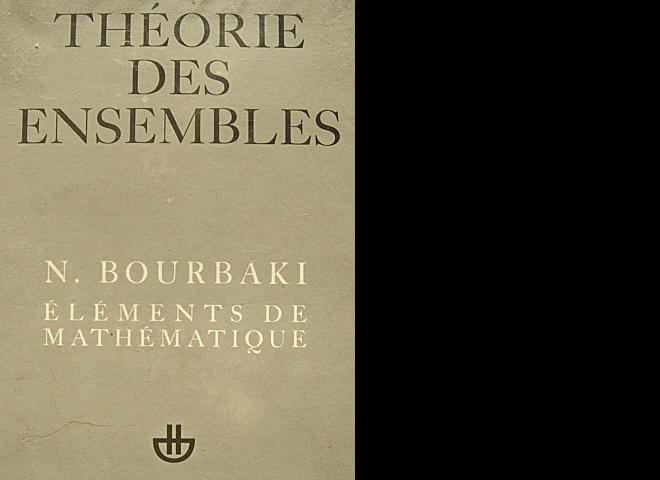
In parallel with the publication of Éléments, the group organized the Bourbaki Seminar, which also contributed to its reputation. Several times a year, mathematicians from around the world were invited to give presentations on contemporary research topics chosen by the collective. Over time, Bourbaki renewed its ranks (members must withdraw at the age of 50), always acting in secret. Many renowned mathematicians have however been associated with the organization, including Jean-Pierre Serre, Laurent Schwartz and Alexandre Grothendieck. The years 1950-1970 marked the “golden age” of the institution. It was a very active, vibrant period for French mathematics, in particular with the development of algebraic geometry. Bourbaki became influential, imposing its vision in academia.
Drawing criticism
Opinions were, however, divided. The group began to draw criticism for its influence, as well as its style—deemed too dry—with too few examples and diagrams. Indeed, the treatise is blamed for certain biases, for example its presentation of the measurement theory, and the absence of the category theory. Bourbaki has also been decried for its role in the “new math” movement. Introduced at secondary school level in the 1970s, it was ambitious in principle but abstract to the point of absurdity in application, and the effort ultimately failed. In actual fact, Bourbaki probably had no real influence in its promotion. While it is true that Jean Dieudonné was a member of the commission that engineered the reform, he had resigned in 1970.
Since the 1980s, the organization's presence has considerably declined. The stream of publications in the Éléments series has slowed to a trickle. The last volume dates from 2012, and its predecessor was released 14 years earlier, in 1998. The initial goal of offering a general vision of mathematics has become dauntingly complex as the discipline expands and diversifies. Yet young mathematicians still have Bourbaki in mind. “I belong to a generation for which the term ‘Bourbakist’ is derogatory, but I am one of those people who think that the group's heritage is of fundamental importance,” explains Cédric Villani, director of the Institut Henri-Poincaré.
The latter is actually the venue for the Bourbaki Seminars today. “This generalist gathering is a relic of the initial utopia,” comments Chambert-Loir, who admits to being closely involved in its organization. When asked whether he is a member of Bourbaki however, he evades the question with a smile. Secrecy remains the rule. Rumor has it that a new volume of Éléments de Mathématique could be released soon. After eighty years, Bourbaki lives on.




